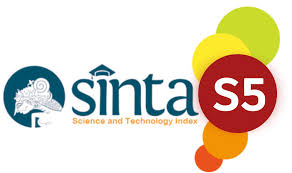Exploring the chances and challenges of green sukuk in Indonesia: TOWS method analysis
DOI:
https://doi.org/10.54957/jolas.v5i1.1202Keywords:
Green sukuk, Sustainable financing, TOWS analysisAbstract
This study explores the opportunities and challenges of green sukuk in Indonesia through a comprehensive TOWS method analysis. By reviewing existing literature and conducting IFAS (Internal Factor Analysis Summary) and EFAS (External Factor Analysis Summary), the study identifies the internal strengths and weaknesses, as well as external opportunities and threats, affecting the green sukuk market in Indonesia. The findings suggest that an aggressive SO (Strength-Opportunity) strategy is most suitable for leveraging the country's strong government support and positive market response, while capitalizing on the increasing global demand for sustainable investments. The study recommends enhancing public and investor awareness, strengthening regulatory support, fostering collaborations with global financial institutions, and providing incentives for green projects. These strategic actions are essential for maximizing the potential of green sukuk as a sustainable financing instrument, driving Indonesia's economic growth, and reinforcing its leadership in the global Islamic finance market. This research contributes to the ongoing discourse on Islamic finance and green financing, offering strategic insights and recommendations for policymakers, investors, and stakeholders to advance Indonesia's environmental and economic goals.
References
Amamou, S. A., Daoud, M. Ben, & Bargaoui, S. A. (2024). Green Bonds Forecasting: Evidence From Pre-Crisis, Covid-19 and Russian–Ukrainian Crisis Frameworks. Journal of Economic Studies, 1(1). https://doi.org/10.1108/JES-01-2024-0061
Anggraini, Y. (2018). Peran Green Sukuk dalam Memperkokoh Posisi Indonesia di Pasar Keuangan Syariah Global. El-Barka: Journal of Islamic Economics and Business, 1(2), 251. https://doi.org/10.21154/elbarka.v1i2.1453
Anik, A., & Prastiwi, I. E. (2017). Pengembangan Instrumen Sukuk dalam Medukung Pembangunan Infratruktur. Jurnal Ilmiah Ekonomi Islam, 3(3), 173. https://doi.org/10.29040/jiei.v3i03.129
Anugrahaeni, P. (2017). Analysis of Indonesian Sovereign Green Bond and Green Sukuk Initiatives. Kajian Ekonomi Dan Keuangan, 1(1), 1–24. https://doi.org/10.31685/kek.v1i1.266
Arshad, A., Parveen, S., & Mir, F. N. (2024). The Role of Green Bonds in Reducing CO 2 Emissions: A Case of Developing Countries. Journal of Economic and Administrative Sciences. https://doi.org/10.1108/JEAS-09-2023-0242
Azhgaliyeva, D., Kapoor, A., & Liu, Y. (2020). Green Bonds for Financing Renewable Energy and Energy Efficiency in South-East Asia: A Review of Policies. Journal of Sustainable Finance & Investment, 10(2), 113–140. https://doi.org/10.1080/20430795.2019.1704160
Bloomberg. (2024). Green Bonds Reached New Heights in 2023. Bloomberg. https://www.bloomberg.com/professional/insights/trading/green-bonds-reached-new-heights-in-2023/
Cendekiawan, M., & Firmansyah, A. (2024). Pengembangan Green Bonds di Indonesia: Upaya Pemerintah untuk Mewujudkan Keuangan Berkelanjutan. Journal of Law, Administration, and Social Science, 4(1), 87–100. https://doi.org/10.54957/jolas.v4i1.714
Chen, Y., & Zhao, Z. J. (2021). The Rise of Green Bonds For Sustainable Finance: Global Standards and Issues With The Expanding Chinese Market. Current Opinion in Environmental Sustainability, 52, 54–57. https://doi.org/10.1016/j.cosust.2021.06.013
Cheong, C., & Choi, J. (2020). Green Bonds: A Survey. Journal of Derivatives and Quantitative Studies: 선물연구, 28(4), 175–189. https://doi.org/10.1108/JDQS-09-2020-0024
Chuc, A. T., & Rasoulinezhad, E. (2021). Energy efficiency financing and the role of green bond: Policies for post-COVID period. China Finance Review International, 12(2), 203-218. https://doi.org/10.1108/CFRI-03-2021-0052
Flammer, C. (2021). Corporate Green Bonds. Journal of Financial Economics, 142(2), 499–516. https://doi.org/10.1016/j.jfineco.2021.01.010
Hania, B. T., Endri, E., & Indra, I. (2022). Identify the Issuance Problem of Corporate Green Sukuk in Indonesia. Islamic Economics Journal, 8(2), 187. https://doi.org/10.21111/iej.v8i2.8404
Hariyani, H. F., Kusuma, H., & Hidayat, W. (2020). Green Sukuk-Based Project on Sustainable Waste Management in Indonesia. Al-Iqtishad: Jurnal Ilmu Ekonomi Syariah, 12(2), 165–178. https://doi.org/10.15408/aiq.v12i2.15129
Hasan, M. B., Rashid, M. M., Hossain, M. N., Rahman, M. M., & Amin, M. R. (2023). Using Green and ESG Assets to Achieve Post-COVID-19 Environmental Sustainability. Fulbright Review of Economics and Policy, 3(1), 25–48. https://doi.org/10.1108/FREP-04-2022-0026
Indriastuty, D. E., Pujianto, P., & Widiantoro, A. (2020). Policy Direction and Regulation of Green Bonds in Indonesia. Journal of Law, Policy and Globalization, 101(1), 20–24.
Jakubik, P., & Uguz, S. (2021). Impact of Green Bond Policies on Insurers: Evidence From The European Equity Market. Journal of Economics and Finance, 45(2), 381–393. https://doi.org/10.1007/s12197-020-09534-4
Karina, L. A. (2019). Peluang dan Tantangan Perkembangan Green Sukuk di Indonesia. Proceeding of Conference on Islamic Management, Accounting, and Economics, 2(1), 259–265.
Kedia, N., & Joshipura, M. (2023). Green Bonds For Sustainability: Current Pathways and New Avenues. Managerial Finance, 49(6), 948–974. https://doi.org/10.1108/MF-08-2022-0367
Kementerian Lingkungan Hidup dan Kehutanan. (2018). Siaran Pers: Indonesia Terbitkan Green Sukuk Pertama di Dunia. Kementerian Lingkungan Hidup Dan Kehutanan. https://ppid.menlhk.go.id/berita/siaran-pers/4654/indonesia-terbitkan-green-sukuk-pertama-di-dunia#:~:text=Sukuk hijau hadir sebagai instrumen,iklim serta pelestarian keanekaragaman hayati
Primadini, I., & Gunadi, G. (2023). Analisis SWOT Terhadap Kebijakan Pajak Digital di Indonesia. Jurnal Riset Akuntansi & Perpajakan (JRAP), 10(1), 33–47. https://doi.org/10.35838/jrap.2023.010.01.04
Pujiantoro, A. S. G., Dindalila, D., & Fakhruddin, N. (2021). Narrative Review: Peluang dan Tantangan Green Sukuk di Indonesia. Diponegoro Journal of Islamic Economics and Business, 1(4), 208–219.
Ramadhan, I. A., & Wirdyanigsih. (2020). Green Sukuk Issuance as an Investment Instrument for Sustainable Development. Proceedings of the International Conference on Law, Governance and Islamic Society (ICOLGIS 2019). https://doi.org/10.2991/assehr.k.200306.189
Reboredo, J. C. (2018). Green Bond and Financial Markets: Co-Movement, Diversification and Price Spillover Effects. Energy Economics, 74, 38–50. https://doi.org/10.1016/j.eneco.2018.05.030
Saravade, V., & Weber, O. (2024). Catalyzing the Growth of Green Bonds: A Closer Look at The Drivers And Barriers of The Canadian Green Bond Market. Sustainability Accounting, Management and Policy Journal, 15(3), 605–627. https://doi.org/10.1108/SAMPJ-08-2023-0604
Siswantoro, D., & Surya, H. V. (2021). Indonesian Green Sukuk (Islamic Bond) of climate change: A revisited analysis. IOP Conference Series: Earth and Environmental Science, 716(1), 012044. https://doi.org/10.1088/1755-1315/716/1/012044
Tolliver, C., Keeley, A. R., & Managi, S. (2020). Drivers of Green Bond Market Growth: The Importance of Nationally Determined Contributions to The Paris Agreement and Implications For Sustainability. Journal of Cleaner Production, 244, 118643. https://doi.org/10.1016/j.jclepro.2019.118643
Wang, J., Chen, X., Li, X., Yu, J., & Zhong, R. (2020). The Market Reaction to Green Bond Issuance: Evidence From China. Pacific-Basin Finance Journal, 60, 101294. https://doi.org/10.1016/j.pacfin.2020.101294
Downloads
Published
How to Cite
Issue
Section
License
Copyright (c) 2025 Amalia Yusrifalda, Bimo Nurcahyo

This work is licensed under a Creative Commons Attribution 4.0 International License.











